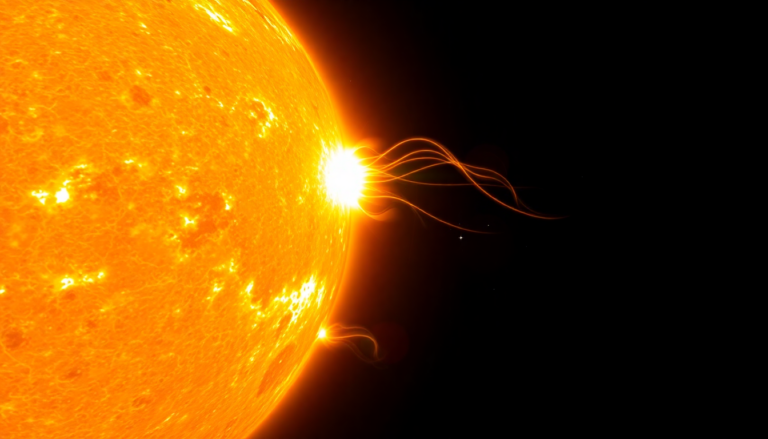Argomenti trattati
On a day like any other, February 10, 2020, the European Space Agency (ESA) decided to launch the Solar Orbiter from Cape Canaveral, Florida. Fast forward over five years, and what do we get? The first-ever images of the Sun’s south pole, courtesy of a metal can hurtling through space. It’s like opening Pandora’s box, only to find it filled with celestial selfies that no one asked for.
The groundbreaking views
The stunning images, snapped on March 16 and 17 this year, were only just revealed. Talk about a late lunch. ESA’s Solar Orbiter had its trajectory tilted by 17 degrees, finally giving us a peek at the Sun’s poles—an area so untouched that it might as well have been a no-go zone for the cosmos. This is the first time anyone has seen these poles up close, as if we’ve stumbled upon a new chapter in the cosmic diary of the universe.
A chaotic magnetic field
As the probe cruised past the Sun, it caught a glimpse of a magnetic field that looked like a toddler’s art project gone wrong. You see, while your fridge magnet has a clear north and south pole, the Sun’s magnetic field is a disorganized mess. ESA describes it as both north and south polarity magnetic fields coexisting in a chaotic dance at the Sun’s south pole. Well, isn’t that a metaphor for our lives? Trying to bring order to a chaotic existence.
Observing the solar chaos
With the Sun currently in its most active phase, the probe was greeted by violent bursts of radiation, and don’t forget those dark sunspots—like the universe’s way of reminding us that things can always get darker. Scientists, with their lab coats and wild theories, are hoping these images will give them the clarity they desperately seek about solar activity and the solar cycle. But will it? Who knows? Maybe they’ll just end up staring at these chaotic images, pondering the meaning of life instead.
A unique perspective
Now, let’s get one thing straight: you can’t see the Sun’s poles from Earth or any other space probe unless you’re looking at them from the right angle. Ulysses, another probe, might have flirted with the poles back in the day, but it was like a long-distance relationship—no actual images, just empty promises. Solar Orbiter, however, comes equipped with the right tools and an unobstructed view, like a paparazzo capturing the Sun in its most vulnerable moments.
What’s next for Solar Orbiter?
As if this wasn’t enough, Solar Orbiter is scheduled to make three more flybys of the north and south poles by 2026. Imagine the drama. Researchers are banking on these upcoming missions to unveil changes in the polar magnetic field. Will they finally get the clarity they crave? Or will it just be another cosmic episode of “who the hell knows?”

